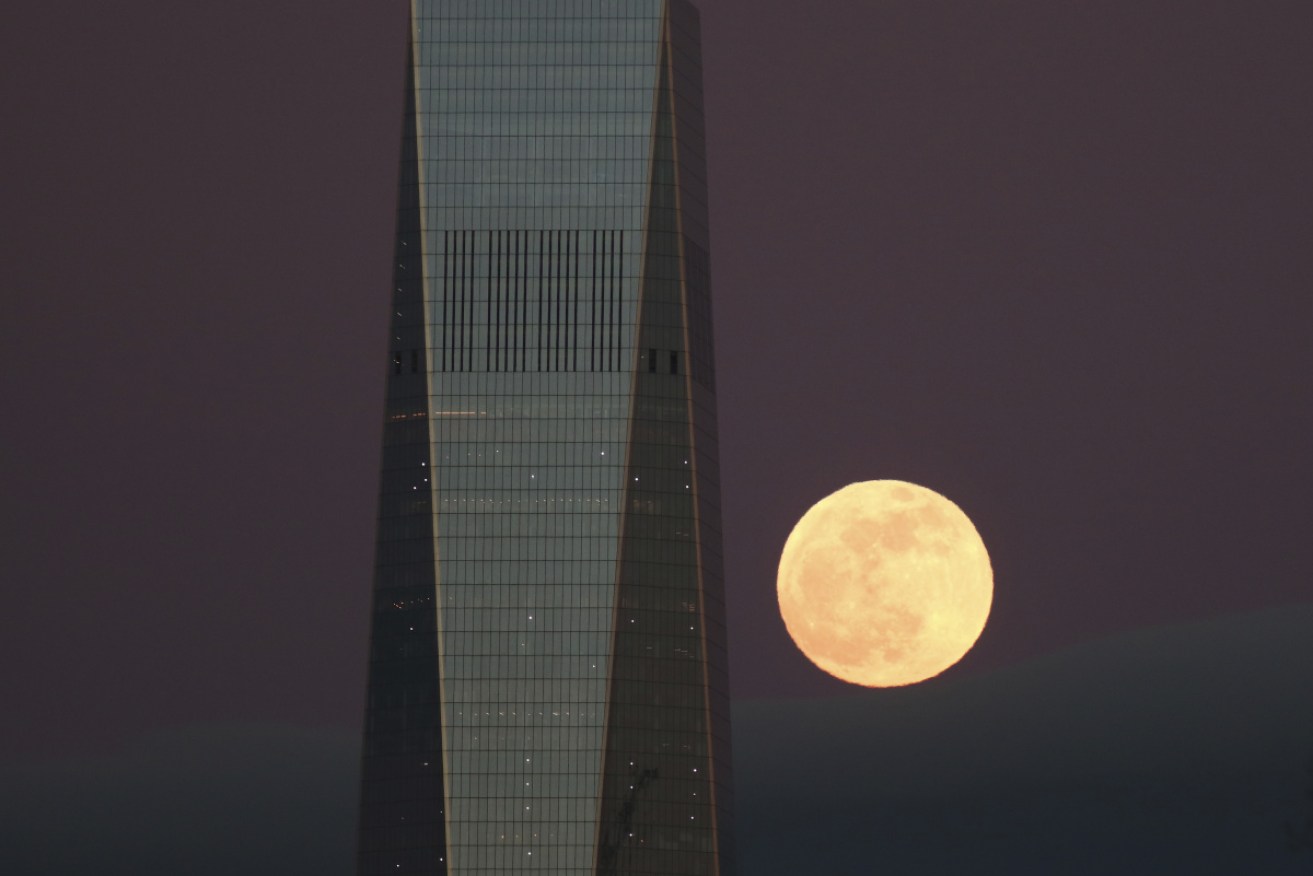Eclipse watchers howl at Super Blood Wolf Moon

The Super Blood Wolf Moon rises behind One World Trade Center in New York City. Photo: Getty
Skywatchers have howled at the moon as a full lunar eclipse appeared over the night sky in Los Angeles, with the lunar surface bathed reddish-orange during a Super Blood Wolf Moon.
“Amazing. It’s a party atmosphere and everyone is just enjoying the spectacle,” amateur astronomer Rosalind Von Wendt said.
More than 1500 people gathered near the city’s famous Hollywood sign to watch the eclipse, in which the Earth cast its shadow over the moon’s face.
“Oh it was fantastic, it was great,” said Brad Mortensen, from Philadelphia.
The moon did not vanish entirely during the total eclipse but, at its height, the entire lunar surface was bathed in a reddish-orange glow that gives rise to the “blood moon” description.
The reddish colour is due to rays of sunlight passing through Earth’s dusty, polluted atmosphere as the moon falls into our planet’s shadow.
The shorter, more pliable blue wavelengths of light are scattered outside the Earth’s shadow and the longer, less bendable red wavelengths are refracted toward the moon.
https://twitter.com/CastingStudio_/status/1087221554457575424
Adding to the visual effect is the fact that the eclipse occurred at a time when the moon reached a point in its orbit putting it close to Earth, an alignment called a supermoon.
It has also earned the name “wolf moon” because it appears in January, when wolves would howl in hunger outside villages early in US history.
Sunday’s eclipse reached its maximum effect over Los Angeles shortly after 9pm local time, but not everyone on the West Coast had a clear view. It rained in San Francisco and San Diego had cloudy skies.
The eclipse was otherwise visible to the naked eye by anyone in the United States where skies were clear.
Unlike a solar eclipse, which requires eye protection to enjoy the view safely, no extra measures need to be taken for hazard-free lunar eclipse watching.
The next chance for Americans to see a total lunar eclipse is 2022.
The best viewing of the one-hour total eclipse was from North and South America, with as many as 2.8 billion people also able to see it from the United Kingdom, Europe, West Africa and northernmost Russia.
-AAP








